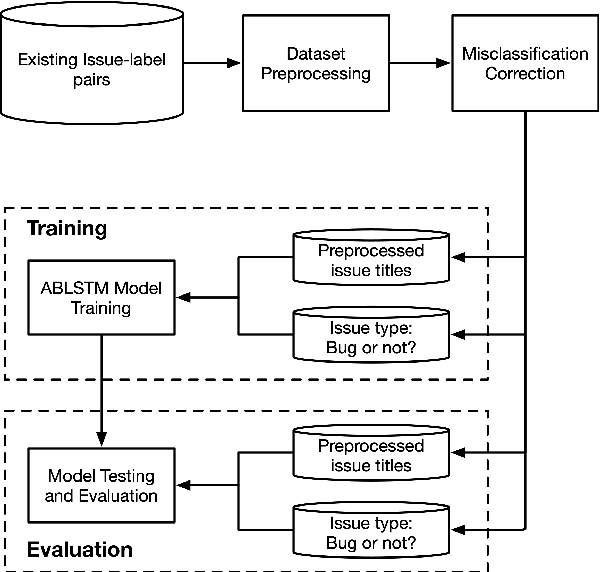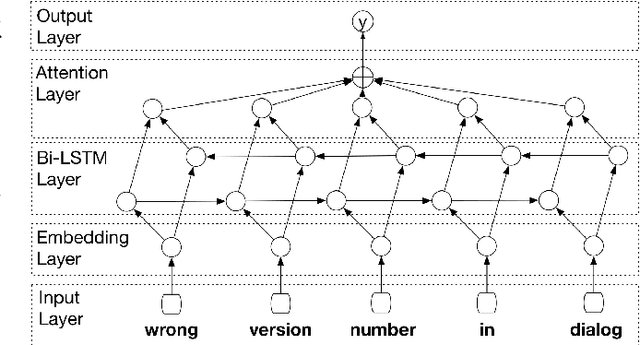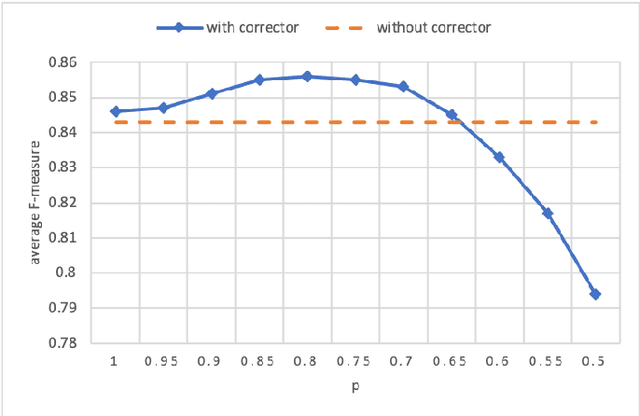Tian Zhang
Software college Northeastern University Shenyang, Liaoning Province, P. R. China
Hunyuan-TurboS: Advancing Large Language Models through Mamba-Transformer Synergy and Adaptive Chain-of-Thought
May 21, 2025Abstract:As Large Language Models (LLMs) rapidly advance, we introduce Hunyuan-TurboS, a novel large hybrid Transformer-Mamba Mixture of Experts (MoE) model. It synergistically combines Mamba's long-sequence processing efficiency with Transformer's superior contextual understanding. Hunyuan-TurboS features an adaptive long-short chain-of-thought (CoT) mechanism, dynamically switching between rapid responses for simple queries and deep "thinking" modes for complex problems, optimizing computational resources. Architecturally, this 56B activated (560B total) parameter model employs 128 layers (Mamba2, Attention, FFN) with an innovative AMF/MF block pattern. Faster Mamba2 ensures linear complexity, Grouped-Query Attention minimizes KV cache, and FFNs use an MoE structure. Pre-trained on 16T high-quality tokens, it supports a 256K context length and is the first industry-deployed large-scale Mamba model. Our comprehensive post-training strategy enhances capabilities via Supervised Fine-Tuning (3M instructions), a novel Adaptive Long-short CoT Fusion method, Multi-round Deliberation Learning for iterative improvement, and a two-stage Large-scale Reinforcement Learning process targeting STEM and general instruction-following. Evaluations show strong performance: overall top 7 rank on LMSYS Chatbot Arena with a score of 1356, outperforming leading models like Gemini-2.0-Flash-001 (1352) and o4-mini-2025-04-16 (1345). TurboS also achieves an average of 77.9% across 23 automated benchmarks. Hunyuan-TurboS balances high performance and efficiency, offering substantial capabilities at lower inference costs than many reasoning models, establishing a new paradigm for efficient large-scale pre-trained models.
Efficient training for large-scale optical neural network using an evolutionary strategy and attention pruning
May 19, 2025Abstract:MZI-based block optical neural networks (BONNs), which can achieve large-scale network models, have increasingly drawn attentions. However, the robustness of the current training algorithm is not high enough. Moreover, large-scale BONNs usually contain numerous trainable parameters, resulting in expensive computation and power consumption. In this article, by pruning matrix blocks and directly optimizing the individuals in population, we propose an on-chip covariance matrix adaptation evolution strategy and attention-based pruning (CAP) algorithm for large-scale BONNs. The calculated results demonstrate that the CAP algorithm can prune 60% and 80% of the parameters for MNIST and Fashion-MNIST datasets, respectively, while only degrades the performance by 3.289% and 4.693%. Considering the influence of dynamic noise in phase shifters, our proposed CAP algorithm (performance degradation of 22.327% for MNIST dataset and 24.019% for Fashion-MNIST dataset utilizing a poor fabricated chip and electrical control with a standard deviation of 0.5) exhibits strongest robustness compared with both our previously reported block adjoint training algorithm (43.963% and 41.074%) and the covariance matrix adaptation evolution strategy (25.757% and 32.871%), respectively. Moreover, when 60% of the parameters are pruned, the CAP algorithm realizes 88.5% accuracy in experiment for the simplified MNIST dataset, which is similar to the simulation result without noise (92.1%). Additionally, we simulationally and experimentally demonstrate that using MZIs with only internal phase shifters to construct BONNs is an efficient way to reduce both the system area and the required trainable parameters. Notably, our proposed CAP algorithm show excellent potential for larger-scale network models and more complex tasks.
Knowledge Distillation for Enhancing Walmart E-commerce Search Relevance Using Large Language Models
May 11, 2025Abstract:Ensuring the products displayed in e-commerce search results are relevant to users queries is crucial for improving the user experience. With their advanced semantic understanding, deep learning models have been widely used for relevance matching in search tasks. While large language models (LLMs) offer superior ranking capabilities, it is challenging to deploy LLMs in real-time systems due to the high-latency requirements. To leverage the ranking power of LLMs while meeting the low-latency demands of production systems, we propose a novel framework that distills a high performing LLM into a more efficient, low-latency student model. To help the student model learn more effectively from the teacher model, we first train the teacher LLM as a classification model with soft targets. Then, we train the student model to capture the relevance margin between pairs of products for a given query using mean squared error loss. Instead of using the same training data as the teacher model, we significantly expand the student model dataset by generating unlabeled data and labeling it with the teacher model predictions. Experimental results show that the student model performance continues to improve as the size of the augmented training data increases. In fact, with enough augmented data, the student model can outperform the teacher model. The student model has been successfully deployed in production at Walmart.com with significantly positive metrics.
* 9 pages, published at WWWW'25
Global-Local Medical SAM Adaptor Based on Full Adaption
Sep 26, 2024Abstract:Emerging of visual language models, such as the segment anything model (SAM), have made great breakthroughs in the field of universal semantic segmentation and significantly aid the improvements of medical image segmentation, in particular with the help of Medical SAM adaptor (Med-SA). However, Med-SA still can be improved, as it fine-tunes SAM in a partial adaption manner. To resolve this problem, we present a novel global medical SAM adaptor (GMed-SA) with full adaption, which can adapt SAM globally. We further combine GMed-SA and Med-SA to propose a global-local medical SAM adaptor (GLMed-SA) to adapt SAM both globally and locally. Extensive experiments have been performed on the challenging public 2D melanoma segmentation dataset. The results show that GLMed-SA outperforms several state-of-the-art semantic segmentation methods on various evaluation metrics, demonstrating the superiority of our methods.
Prompt-Softbox-Prompt: A free-text Embedding Control for Image Editing
Aug 27, 2024Abstract:Text-driven diffusion models have achieved remarkable success in image editing, but a crucial component in these models-text embeddings-has not been fully explored. The entanglement and opacity of text embeddings present significant challenges to achieving precise image editing. In this paper, we provide a comprehensive and in-depth analysis of text embeddings in Stable Diffusion XL, offering three key insights. First, while the 'aug_embedding' captures the full semantic content of the text, its contribution to the final image generation is relatively minor. Second, 'BOS' and 'Padding_embedding' do not contain any semantic information. Lastly, the 'EOS' holds the semantic information of all words and contains the most style features. Each word embedding plays a unique role without interfering with one another. Based on these insights, we propose a novel approach for controllable image editing using a free-text embedding control method called PSP (Prompt-Softbox-Prompt). PSP enables precise image editing by inserting or adding text embeddings within the cross-attention layers and using Softbox to define and control the specific area for semantic injection. This technique allows for obejct additions and replacements while preserving other areas of the image. Additionally, PSP can achieve style transfer by simply replacing text embeddings. Extensive experimental results show that PSP achieves significant results in tasks such as object replacement, object addition, and style transfer.
ECG-Chat: A Large ECG-Language Model for Cardiac Disease Diagnosis
Aug 16, 2024Abstract:The success of Multimodal Large Language Models (MLLMs) in the medical auxiliary field shows great potential, allowing patients to engage in conversations using physiological signal data. However, general MLLMs perform poorly in cardiac disease diagnosis, particularly in the integration of ECG data analysis and long-text medical report generation, mainly due to the complexity of ECG data analysis and the gap between text and ECG signal modalities. Additionally, models often exhibit severe stability deficiencies in long-text generation due to the lack of precise knowledge strongly related to user queries. To address these issues, we propose ECG-Chat, the first multitask MLLMs focused on ECG medical report generation, providing multimodal conversational capabilities based on cardiology knowledge. We propose a contrastive learning approach that integrates ECG waveform data with text reports, aligning ECG features with reports in a fine-grained manner. This method also results in an ECG encoder that excels in zero-shot report retrieval tasks. Additionally, expanding existing datasets, we constructed a 19k ECG diagnosis dataset and a 25k multi-turn dialogue dataset for training and fine-tuning ECG-Chat, which provides professional diagnostic and conversational capabilities. Furthermore, ECG-Chat can generate comprehensive ECG analysis reports through an automated LaTeX generation pipeline. We established a benchmark for the ECG report generation task and tested our model on multiple baselines. ECG-Chat achieved the best performance in classification, retrieval, multimodal dialogue, and medical report generation tasks. Our report template design has also been widely recognized by medical practitioners.
VSRQ: Quantitative Assessment Method for Safety Risk of Vehicle Intelligent Connected System
May 03, 2023



Abstract:The field of intelligent connected in modern vehicles continues to expand, and the functions of vehicles become more and more complex with the development of the times. This has also led to an increasing number of vehicle vulnerabilities and many safety issues. Therefore, it is particularly important to identify high-risk vehicle intelligent connected systems, because it can inform security personnel which systems are most vulnerable to attacks, allowing them to conduct more thorough inspections and tests. In this paper, we develop a new model for vehicle risk assessment by combining I-FAHP with FCA clustering: VSRQ model. We extract important indicators related to vehicle safety, use fuzzy cluster analys (FCA) combined with fuzzy analytic hierarchy process (FAHP) to mine the vulnerable components of the vehicle intelligent connected system, and conduct priority testing on vulnerable components to reduce risks and ensure vehicle safety. We evaluate the model on OpenPilot and experimentally demonstrate the effectiveness of the VSRQ model in identifying the safety of vehicle intelligent connected systems. The experiment fully complies with ISO 26262 and ISO/SAE 21434 standards, and our model has a higher accuracy rate than other models. These results provide a promising new research direction for predicting the security risks of vehicle intelligent connected systems and provide typical application tasks for VSRQ. The experimental results show that the accuracy rate is 94.36%, and the recall rate is 73.43%, which is at least 14.63% higher than all other known indicators.
Learning Invariant Visual Representations for Compositional Zero-Shot Learning
Jun 02, 2022



Abstract:Compositional Zero-Shot Learning (CZSL) aims to recognize novel compositions using knowledge learned from seen attribute-object compositions in the training set. Previous works mainly project an image and a composition into a common embedding space to measure their compatibility score. However, both attributes and objects share the visual representations learned above, leading the model to exploit spurious correlations and bias towards seen pairs. Instead, we reconsider CZSL as an out-of-distribution generalization problem. If an object is treated as a domain, we can learn object-invariant features to recognize the attributes attached to any object reliably. Similarly, attribute-invariant features can also be learned when recognizing the objects with attributes as domains. Specifically, we propose an invariant feature learning framework to align different domains at the representation and gradient levels to capture the intrinsic characteristics associated with the tasks. Experiments on two CZSL benchmarks demonstrate that the proposed method significantly outperforms the previous state-of-the-art.
Progressive Co-Attention Network for Fine-grained Visual Classification
Jan 21, 2021



Abstract:Fine-grained visual classification aims to recognize images belonging to multiple sub-categories within a same category. It is a challenging task due to the inherently subtle variations among highly-confused categories. Most existing methods only take individual image as input, which may limit the ability of models to recognize contrastive clues from different images. In this paper, we propose an effective method called progressive co-attention network (PCA-Net) to tackle this problem. Specifically, we calculate the channel-wise similarity by interacting the feature channels within same-category images to capture the common discriminative features. Considering that complementary imformation is also crucial for recognition, we erase the prominent areas enhanced by the channel interaction to force the network to focus on other discriminative regions. The proposed model can be trained in an end-to-end manner, and only requires image-level label supervision. It has achieved competitive results on three fine-grained visual classification benchmark datasets: CUB-200-2011, Stanford Cars, and FGVC Aircraft.
A Bug or a Suggestion? An Automatic Way to Label Issues
Sep 03, 2019



Abstract:More and more users and developers are using Issue Tracking Systems (ITSs) to report issues, including bugs, feature requests, enhancement suggestions, etc. Different information, however, is gathered from users when issues are reported on different ITSs, which presents considerable challenges for issue classification tools to work effectively across the ITSs. Besides, bugs often take higher priority when it comes to classifying the issues, while existing approaches to issue classification seldom focus on distinguishing bugs and the other non-bug issues, leading to suboptimal accuracy in bug identification. In this paper, we propose a deep learning-based approach to automatically identify bug-reporting issues across various ITSs. The approach implements the k-NN algorithm to detect and correct misclassifications in data extracted from the ITSs, and trains an attention-based bi-directional long short-term memory (ABLSTM) network using a dataset of over 1.2 million labelled issues to identify bug reports. Experimental evaluation shows that our approach achieved an F-measure of 85.6\% in distinguishing bugs and other issues, significantly outperforming the other benchmark and state-of-the-art approaches examined in the experiment.
 Add to Chrome
Add to Chrome Add to Firefox
Add to Firefox Add to Edge
Add to Edge